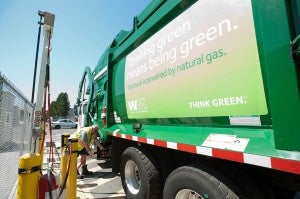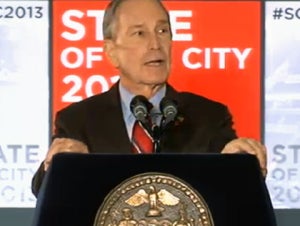This blog post was written by Jason Mathers, Senior Manager of EDF’s Corporate Partnerships Program.
The use of natural gas to power our nation’s freight fleet vehicles is a hot topic in these days of rising diesel and falling natural gas prices. There are several reasons to be excited about this opportunity, including operating cost savings, use of a domestic fuel source, and the potential for a reduction in greenhouse gas (GHG) emissions compared to diesel heavy-duty trucks. However, significant concerns remain with the development of new gas supplies, including the threat of fugitive methane emissions from natural gas vehicles and the fuel supply chain.
Methane is the main ingredient in natural gas and a GHG pollutant many times more potent than carbon dioxide (CO2), the principal contributor to man-made climate change. Even small amounts of methane leakage across the natural gas supply chain can undermine the climate benefit of switching to natural gas from other fossil fuels for some period of time.
In a paper published last year, EDF scientists and other leading researchers examined the impact of potential fugitive emissions on the climate benefits of a switch from diesel to natural gas heavy-duty trucks. The study found that, according to the best available data, methane leak rates would need to be below 1% of gas produced in order to ensure that switching from diesel to natural gas produces climate benefits at all points in time. They also found that – using the EPA leakage rate estimates at that time – converting a fleet of heavy duty diesel vehicles to natural gas would result in increased climate warming for more than 250 years before any climate benefits were achieved.
EDF is working with leading researchers and companies in a series of studies designed to better understand and characterize the methane leak rate across the natural gas supply chain. The studies will take direct measurements at various points across the production, gathering and processing, long distance transmission and storage, local distribution, and transportation. The first study, led by researchers at the University of Texas, is measuring emissions from natural gas production. Results will be released in the coming months. Read More















